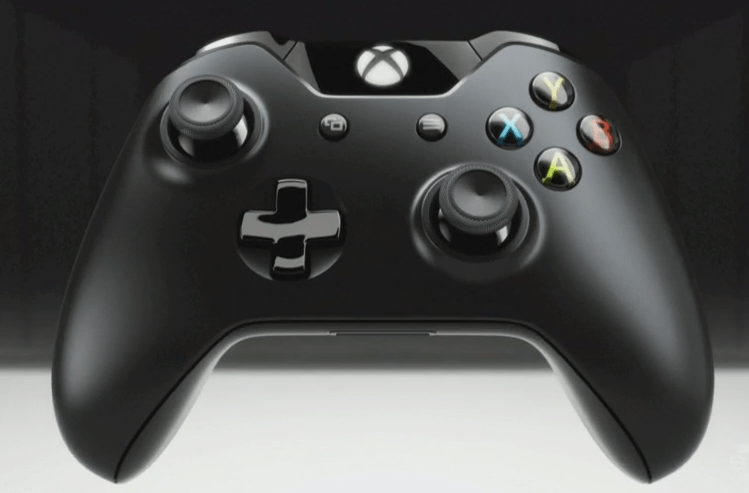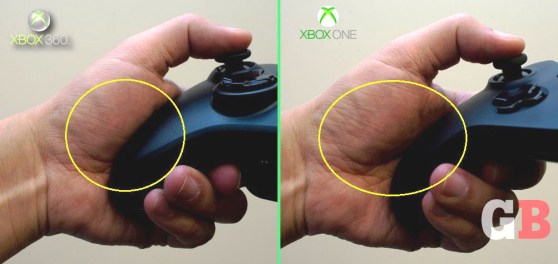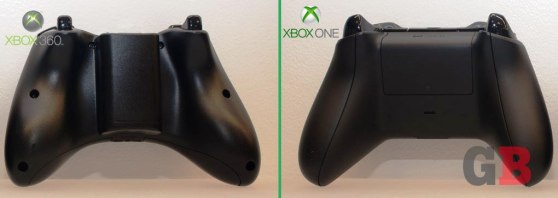The grips
This must be the most difficult thing for an engineer to figure out: Whose mitts do you design a controller for? “We knew that the age range of gamers is changing,” said Morris. “Younger kids are playing. Younger kids holding a controller — they can struggle to get a grip. There’s also more women playing video games than ever before. Women tend to have smaller hands than men, so [we have to take that into consideration].”
As mentioned in part one of this series, Microsoft went through hundreds of prototypes, and many of them were simply small, increment tweaks — adding or shaving a millimeter here or there — in searching for the perfect, one-size-fits-all model. It knew the classic two handles (or grips — or lobes, as MS tends to call them during our interviews) work well, but it still sought out something that was easier to hold for most gamers.
The solution that it came up with is rather interesting — a fix for a problem no one knew they had. “We looked at the mechanics of the hand,” said Morris. “If you look at the way that you hold this controller, the way it’s shaped, you tend to push the handle up into the thumb joint. That really restricts the ability for your thumb to get around the controller.”
When Morris showed this to us, he pointed out that the fat muscle that helps to pull your thumb in, located at the base of your palm and under the thumb, tends to smush right into the 360 controller’s grips. “We wanted to get that handle down into the [lower] part of your palm so that you weren’t interfering with this joint at all,” said Morris.
In other words, Microsoft slimmed and sloped down the tops of the handles so that they won’t get in the way of the thumb and its attached muscles. “Just that one improvement alone will mean that your mobility — the mobility of your thumbs as they move around the controller — will be that much better,” said Morris.
The weight and center of gravity
You might not think much about it (unless you’re holding the original PlayStation 3 Sixaxis), but how heavy your controller is can change how you perceive its quality. “We continued to test attributes like weight,” said Morris. “A heavier thing tends to feel more premium, but if you’re playing for a long time, a heavy thing can cause fatigue.”
Microsoft has an entire set of prototypes that differ only by fractions of a gram, so they can focus-test the various options. But just how does one make a controller heavier? We’d like to think that involves engineers squeezing mouse-sized barbell weight plates into the controller, but it’s actually much simpler than that. “If you were going to add weight,” said Morris, “you could do it through materials selection. A metal housing versus a plastic housing, for example. Sometimes you actually add bits of metal that are just there to change the center of gravity and change the weight.”
Microsoft didn’t really have to do that, instead removing the bulky battery pack from the back and forcing that housing inside, deeper into the body of the controller. This not only results in a more comfortable fit for your non-thumb digits — the back is all flat and smooth now — but also slightly shifts everything toward you in a very subtle fashion. “The way that we integrated the battery,” said Morris, “it actually moves the center of gravity closer to you. That’s good because with the battery below and forward, the Xbox 360 controller wants to fall forward out of your hands. Whereas the Xbox One controller puts that weight closer to the palms of your hand. It’s easier to hold, which also reduces fatigue.”
The design
If you think that attention to detail is ridiculously small and anal-retentive … well, we’re not done yet.
Turn your Xbox 360 controller over and look at its backside. See those holes? And that physical seam where the back (white by default) meets the other color (gray) toward the bottom? Those are now gone. “It’s a huge deal,” said Alam. “If you’re a core gamer and you’re playing Call of Duty for four hours and your hand has been sitting in the same spot and gripping tightly — you find that people develop calluses from the screw areas. It’s not the most comfortable thing. You don’t feel it in a 15-minute game session. An hour, two hours, three hours, you start to wonder, ‘Why isn’t this a smooth surface?’ That’s the kind of question we asked ourselves.
“So we got rid of the screws [and the seam]. This is a screwless design. There is technology available that allows us to eliminate this. Yes, it’s more cost. Yes, it takes a bit out of our pocket to make sure this happens. But it’s the right thing for the consumer.”
Dishing out the dough to make sure we can play Call of Duty comfortably for four hours straight? And here you thought all Microsoft wanted was for you to spend all your time watching cable TV through the Xbox One.
The rest of the series:
- Part 1: Projectors, smells (!), and other stuff that didn’t make it in
- Part 2: What’s new with the analog sticks and D-pad
- Part 3: What’s new with the buttons and triggers
- Part 4: A close look at the new rumble, faster speed, design, and everything else
Photo credits (nonstock shots): Jeff Emtman. Special thanks to VentureBeat reporter Tom Cheredar for the image-editing help.
VentureBeat's mission is to be a digital town square for technical decision-makers to gain knowledge about transformative enterprise technology and transact. Learn More




